X Email Mobile
| red | ¥0.0 | 4998 piece available |
|
| blue | ¥0.0 | 4998 piece available |
|
| silver | ¥0.0 | 4998 piece available |
|
| black | ¥0.0 | 4998 piece available |
|
A new item has been added to your Shopping Cart. You now have items in your Shopping Cart.
Xianwang Auto Product Firm 12yr.
Main Products:Automotive products automotive products,air pump vacuum cleaner fan,care products car wax,spray wax brush,sponge towels,cell phone,charger,power supply jacks car cover,sun shade,ashtrays
Contacts:张晗晓Chat
Mobile:86-15157935559
E-mail: WeChat:13868908823
Address:68973 , 1 Street, 4 F, 109 Gate, International Trade Mart (District 5).
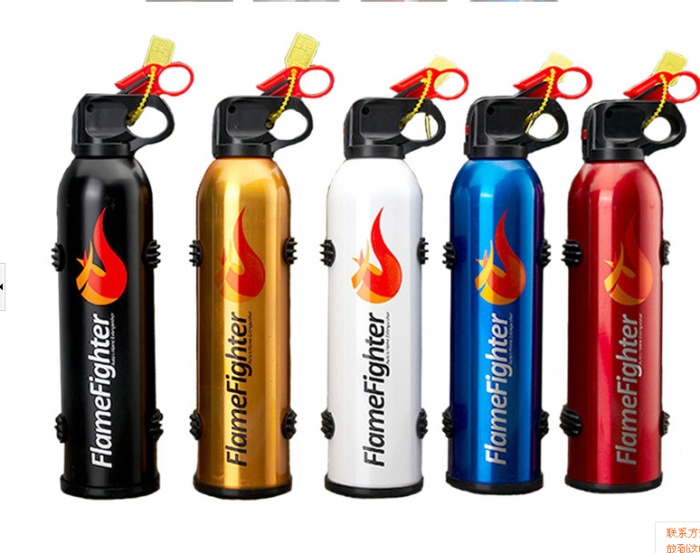
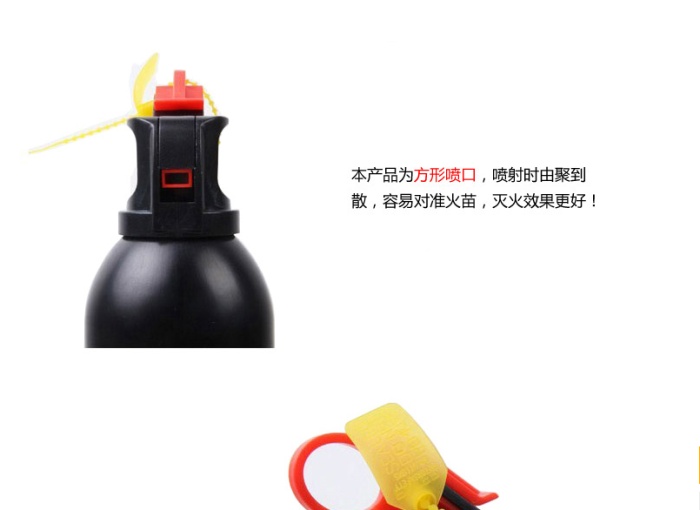
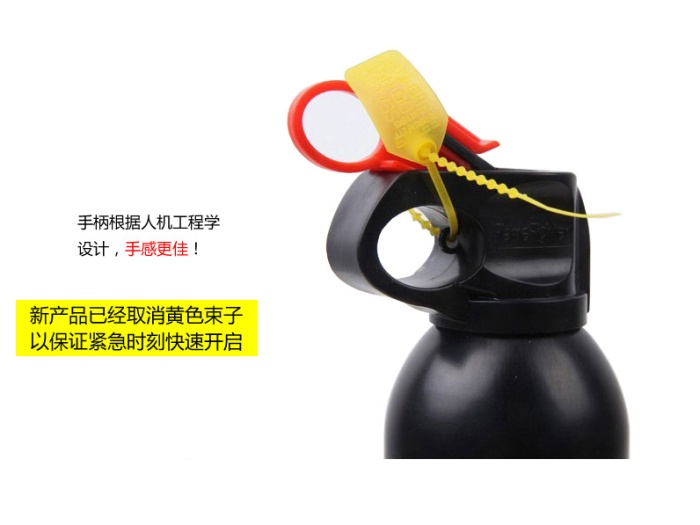
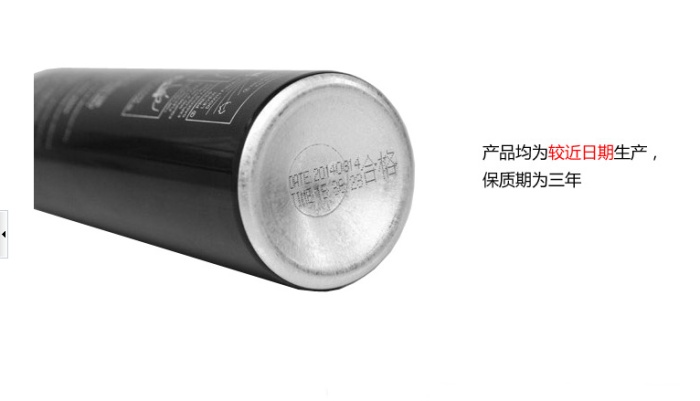
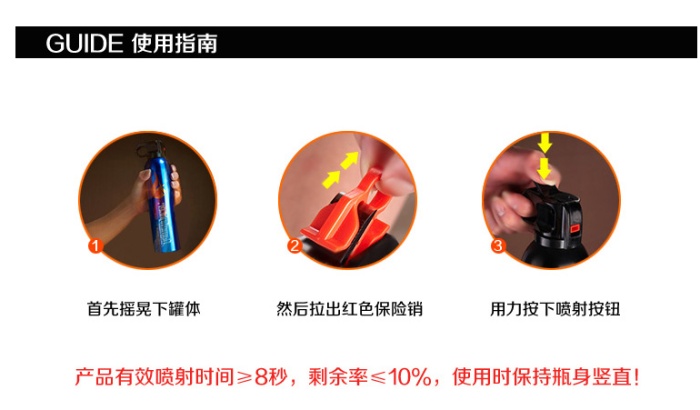
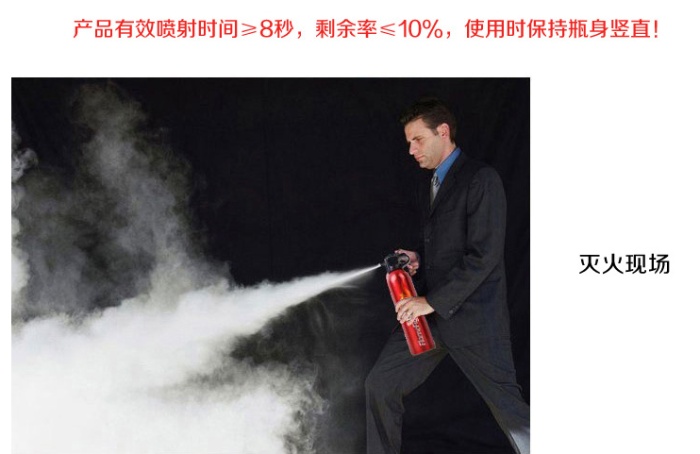
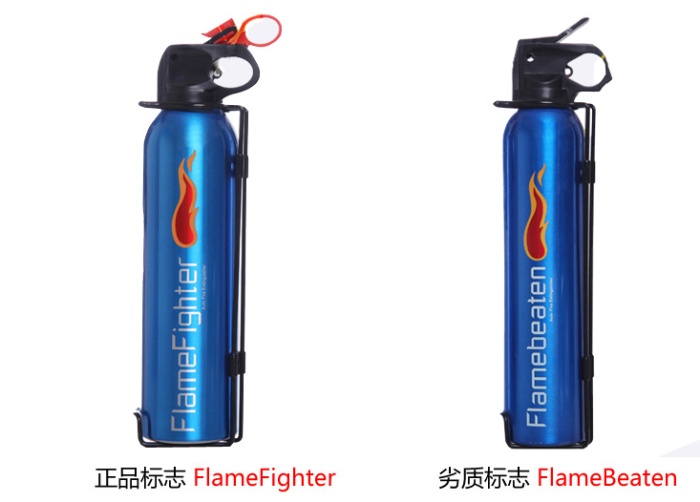
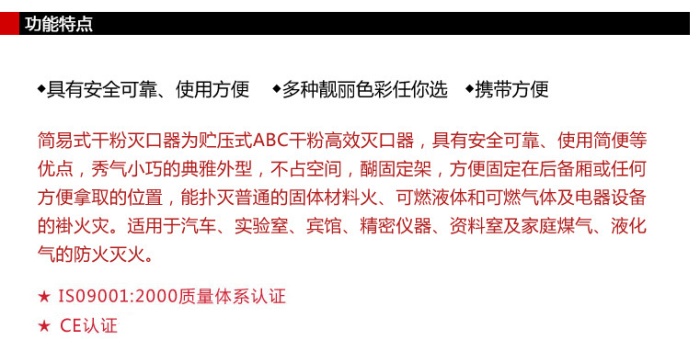
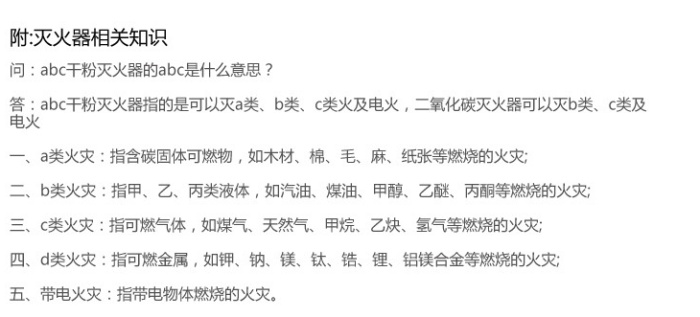

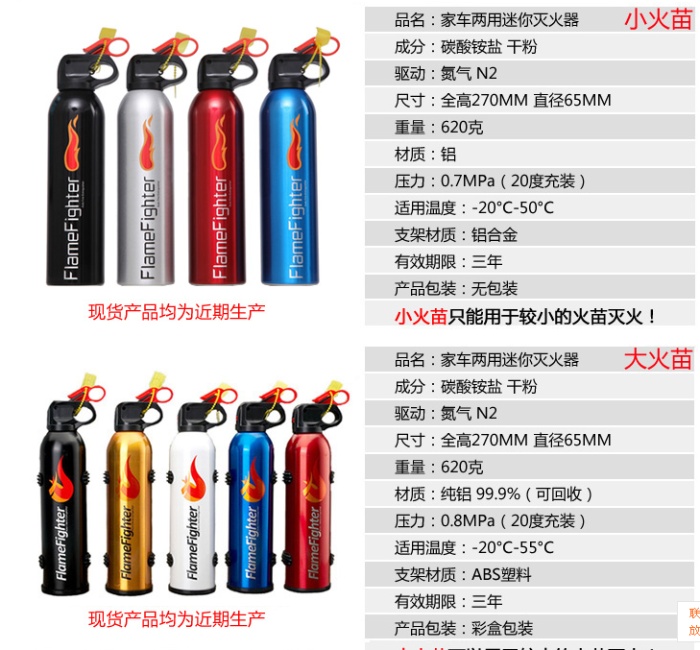
Product Specifications:
1、Bottle Specification: Height: 290mm, Diameter: 60mm
2. Primer Requirements: White
3、Fire Extinguisher: ABC (Ammonium Phosphate) Dry Powder 50%
4. Driving Gas: Nitrogen
5. Bottle Material: Aluminum (without pressure gauge)
6. 20°C filling pressure: 0.8MPa
7. Total weight of the fire extinguisher: 0.6kg
8、Temperature Range: -10°C - +55°C
9. Fire extinguisher weight: 400±22.5g
10、Simplified Chinese water pressure test pressure: 3.0MPA
Shelf Life: Three Years
Product Introduction:
Simple dry powder fire extinguishers are pressurized ABC dry powder fire extinguishers with high efficiency. They are reliable and safe, easy to use, and have other advantages. With a delicate and compact appearance, they do not occupy much space. They are equipped with fixed frames, which are convenient for fixing in the trunk or any convenient location for picking up. They can put out the initial fires of ordinary solid materials, combustible liquids, and combustible gases, as well as electrical equipment. They are suitable for fire prevention and fire extinguishment in cars, laboratories, hotels, precision instruments, document rooms, and family gas and liquefied petroleum gas.
★ISO 9001:2000 Quality Management System Certification
★KGS认证证
Instructions for Use:
Before use, first invert the device several times to loosen the dry powder. When you are about 3-4 meters away from the source of fire, pull out the safety pin, hold the nozzle in one hand, aim at the source of fire, and press the handle with your thumb. The dry powder will be immediately ejected.
When using a fire extinguisher with a spray nozzle or a pressurized fire extinguisher, one hand should always hold down the handle and not be released, or the spray will be interrupted. For dry powder fire extinguishers used to put out fires caused by combustible or flammable liquids, they should be aimed at the heart of the flame and swept across. If the liquid fire is burning in a spreading manner, the fire extinguisher should be aimed at the root of the flame from near to far, with a level spray and a sweeping motion from side to side, advancing quickly until the flames are completely extinguished.
If a combustible liquid is burning inside a container, the user should aim at the root of the flame and sway back and forth to sweep, so that the sprayed dry powder flows cover the entire surface of the opening of the container; when the flame is driven out of the container, the user should continue to spray until the flame is completely extinguished. When fighting a fire in a container of combustible liquid, it should be noted that the nozzle should not be directly aimed at the liquid surface to prevent the impact of the jet stream from causing the spattering of combustible liquid to expand the fire, causing difficulty in extinguishing the fire.
Appendix:Fire Extinguisher Knowledge
ask:ABC dry powder fire extinguisher"What does 'abc' mean?
Answer:ABC dry powder fire extinguisherrefers to the ability to extinguishA类andB类andC classFire and electricity.Carbon dioxide fire extinguishercan extinguishB class, C classelectric fire
1. Class A Fire: Refers to fires caused by combustible carbon-containing solid materials, such as wood, cotton, wool, linen, paper, etc.
Category B fires: fires involving Class A, B, or C flammable liquids, such as gasoline, kerosene, methanol, ethyl ether, and acetone.
Category C fires: Refers to fires caused by combustible gases, such as gas, natural gas, methane, acetylene, hydrogen, etc.
Category D fires: Refers to fires caused by combustible metals, such as potassium, sodium, magnesium, titanium, zirconium, lithium, and aluminum magnesium alloys, etc.
Five, electrical fire: Refers to a fire involving the burning of electrically charged objects.
Update time:
TOP